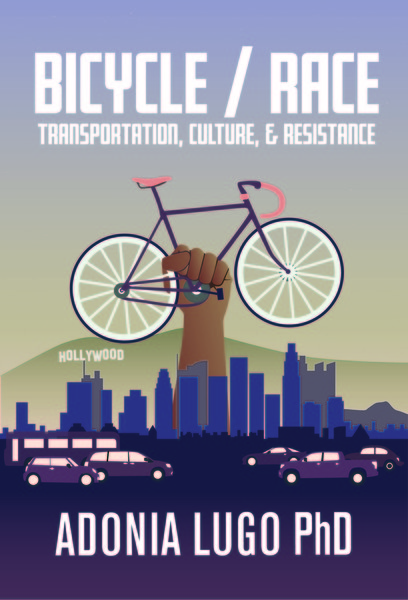Recently I came across an interlude in Virginia Woolf's Mrs. Dalloway that illustrates the exhilaration to be found in wandering around cities.
"And Elizabeth waited in Victoria Street for an omnibus. It was so nice to be out of doors. She thought perhaps she need not go home just yet. It was so nice to be out in the air. So she would get on to an omnibus"
"Buses swooped, settled, were off - garish caravans, glistening with red and yellow varnish. But which should she get on to? She had no preferences"
"She was delighted to be free. The fresh air was so delicious. It had been so stuffy in the Army and Navy Stores. And now it was like riding, to be rushing up Whitehall"
I've read a lot about the concept of flânerie, the activity of wandering through and reading the city and its inhabitants like a book. Usually it is the figure of a man who does this, the flâneur. In my own ethnographic research as a bike activist I've thought of myself as a flâneuse, and I always delight in finding others' descriptions of women experiencing the invigorating freedom of wandering, attentively, through an urban landscape.
This is what I've been up to in Seattle for the past few weeks, when I wasn't sick in bed (maybe my lungs needed to exorcise LA's pollution?). Like Woolf's Elizabeth, I've been riding buses. This is a city full of fresh wind, with bus routes leading all over the place. My limited adventures have led me to speculate about Seattle's public culture. Most people I pass on the street don't make eye contact, and the few times I've managed to smile at someone I've been met with blank stares. One exception happened yesterday, when a young mother pushing a stroller responded warmly. There seem to be lots of mentally ill people out and about, based on the muttering I hear on maybe one out of five buses I ride. Perhaps people button up to avoid confusing interactions with strangers?
Yesterday I marched all the way up to the crest of Queen Anne only to be nearly hit by a woman driving an SUV and talking on a cell phone. That, combined with the lack of eye contact among passersby, made me feel invisible. I grew resentful of the affluence evident in the manicured gardens and gourmet butchers of the neighborhoods I've explored. It's not my dream.
Today I rode buses down to Columbia City, hoping I would find a neighborhood with more diversity than the ones closer to where I live. As the 48 headed south of Capitol Hill, I started to see houses that had rough edges, not clean, fresh coats of paint. Yards looked disarrayed. There wasn't a tanning salon in sight. When I made my transfer to the 8 and continued south, the houses got further apart. So the urban density would not continue this far. I wondered if Columbia City would look like St. John's in Portland, a separate little town connected by neighborhoods to the larger city. It did. The main drag, Rainier, had lots of old buildings with character. There were a number of the clean, bright, storefronts that exhibit Seattle's peculiar style of manufactured quirkiness.
I ate a whole lot of pulled pork at Jones Barbeque, and then headed over to my destination, Bike Works. I chatted with a dude there for a bit about how central Seattle is much more segregated than the Los Angeles I know, and he told me that people of color and low-income folks are getting pushed further and further south into the suburbs.
I hopped onto a different bus, the 7, and headed up Rainier to downtown Seattle, where I transferred to the 16.

